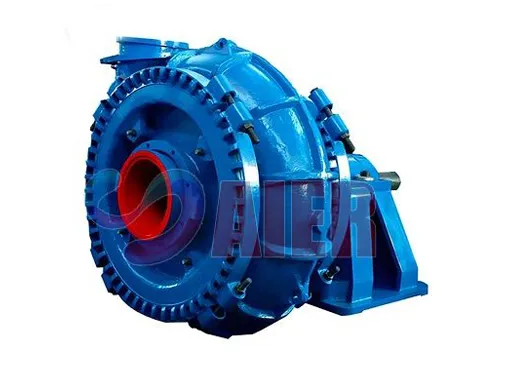ຕ.ລ. . 22, 2024 14:48 Back to list
Effective Sealing Solutions for Slurry Pumps to Enhance Performance and Longevity
Understanding Slurry Pump Seal Importance and Types
Slurry pumps are essential components in various industrial processes, particularly in mining, mineral processing, and wastewater treatment. They are designed to transport slurries—mixtures of solids and liquids—effectively and reliably. One critical aspect of slurry pumps is their sealing mechanism, which prevents leakage of the abrasive and corrosive materials being pumped. In this article, we will delve into the importance of seals in slurry pumps, explore different types of seals, and discuss best practices for sealing efficiency.
The Importance of Slurry Pump Seals
Seals in slurry pumps play a vital role in ensuring the operational efficiency and longevity of the pump. The primary functions of a pump seal include
1. Preventing Leakage Slurry pumps handle challenging materials that can be abrasive and corrosive. An effective seal prevents the slurry from leaking out, which can pose environmental hazards, reduce efficiency, and lead to costly downtime.
2. Protecting Pump Components Slurry contains solid particles that can cause wear and damage to various pump components. A good seal protects critical parts such as bearings and impellers from abrasive wear, extending the pump's lifespan.
3. Maintaining Pressure Seals help maintain the necessary pressure within the pump system, ensuring that the slurry is transported effectively through pipelines or other equipment. Improper sealing can lead to pressure drops, which can disrupt the entire process.
4. Reducing Maintenance Costs By preventing leakage and minimizing wear, effective seals reduce maintenance needs and associated costs. This is crucial in industries where operational efficiency is paramount.
Types of Slurry Pump Seals
Several sealing technologies are available for slurry pumps, each with its advantages and limitations. The choice of seal often depends on the specific application, type of slurry, and operating conditions. Here are some common types of slurry pump seals
1. Mechanical Seals These are widely used in slurry pumps due to their ability to provide a high level of sealing effectiveness. They consist of rotating and stationary faces that create a tight seal. Mechanical seals are excellent for handling various slurries, including those that are abrasive or corrosive. However, they may require more maintenance and careful selection to ensure compatibility with the slurry.
slurry pump seal

2. Packing Seals Packing seals are made of braided fibers that are compressed around the pump shaft. They are simpler and less expensive than mechanical seals, making them a popular choice in some applications. However, packing seals typically have a shorter lifespan and may require periodic adjustment to prevent leaks.
3. Lip Seals These seals consist of a flexible lip that fits against the shaft or housing, providing good sealing capabilities. While lip seals are often less expensive and easier to install, they may not perform as well under high pressures or with highly abrasive slurries.
4. Diaphragm Seals Used primarily in applications where contamination must be avoided, diaphragm seals separate the pumping mechanism from the slurry. They are ideal for high-purity applications, although they can be more complex and costly.
Best Practices for Sealing Efficiency
To ensure optimal performance and longevity of slurry pump seals, several best practices should be observed
1. Proper Installation Seals should be installed according to manufacturer instructions. Poor installation can lead to premature failure and leaks.
2. Regular Inspection and Maintenance Routine inspections can help identify wear and potential issues before they become significant problems. Monitoring the condition of seals can reduce unexpected downtimes.
3. Choose the Right Seal for Your Application Consider the characteristics of the slurry, including particle size, temperature, and chemical properties, when selecting a seal. Selecting the appropriate seal can enhance efficiency and reduce maintenance.
4. Training and Education Staff involved in the operation and maintenance of slurry pumps should be trained on the importance of seals and how to care for them effectively. Investing in personnel education can result in better pump performance and reduced costs.
Conclusion
In the world of slurry pumping, the seal is a small yet crucial component that significantly impacts performance and reliability. Understanding the importance of seals, the different types available, and best practices for maintenance will help industries optimize their operations. By investing in proper sealing solutions and maintenance strategies, companies can enhance the efficiency and longevity of their slurry pumps, thereby achieving better productivity and reduced operational costs.
-
Top Submersible Pump Companies High Quality Manufacturers & Suppliers in China
NewsJul.08,2025
-
High Quality Seal for 5 Inch Dredge Pump Reliable China Manufacturer & Supplier
NewsJul.08,2025
-
High-Efficiency Slurry Sand Pump from Leading China Manufacturer – Durable & Reliable Solutions
NewsJul.07,2025
-
High-Quality Slurry Pump Made in China Durable Steel Mill Slurry Pump & Parts
NewsJul.07,2025
-
High Quality Excavator Dredge Pump Manufacturer & Suppliers from China – Reliable, Durable, Efficient Solutions
NewsJul.07,2025
-
Wholesale Slurry Pump Closed Impeller Supplier High Efficiency China Slurry Pump Closed Impeller
NewsJul.06,2025
